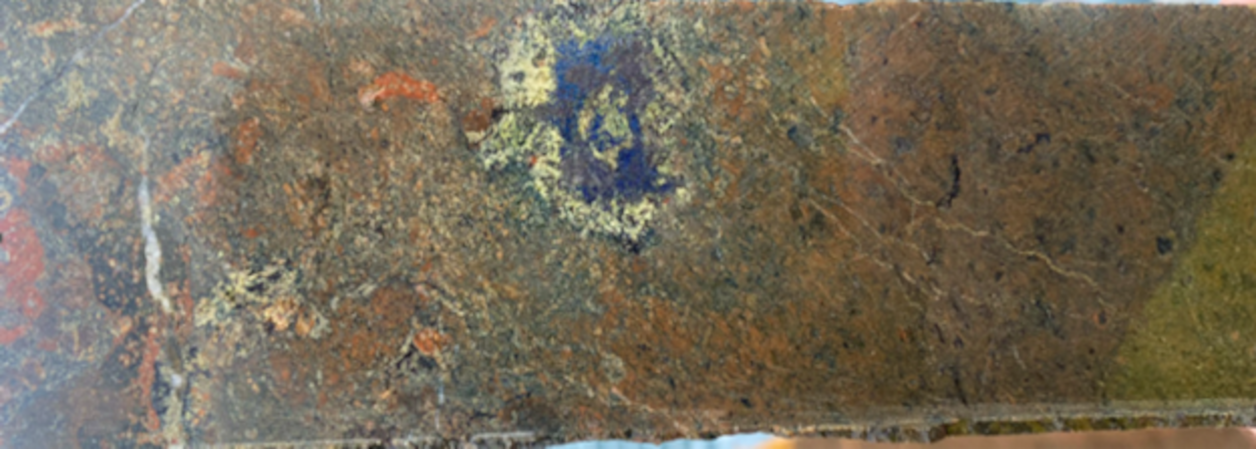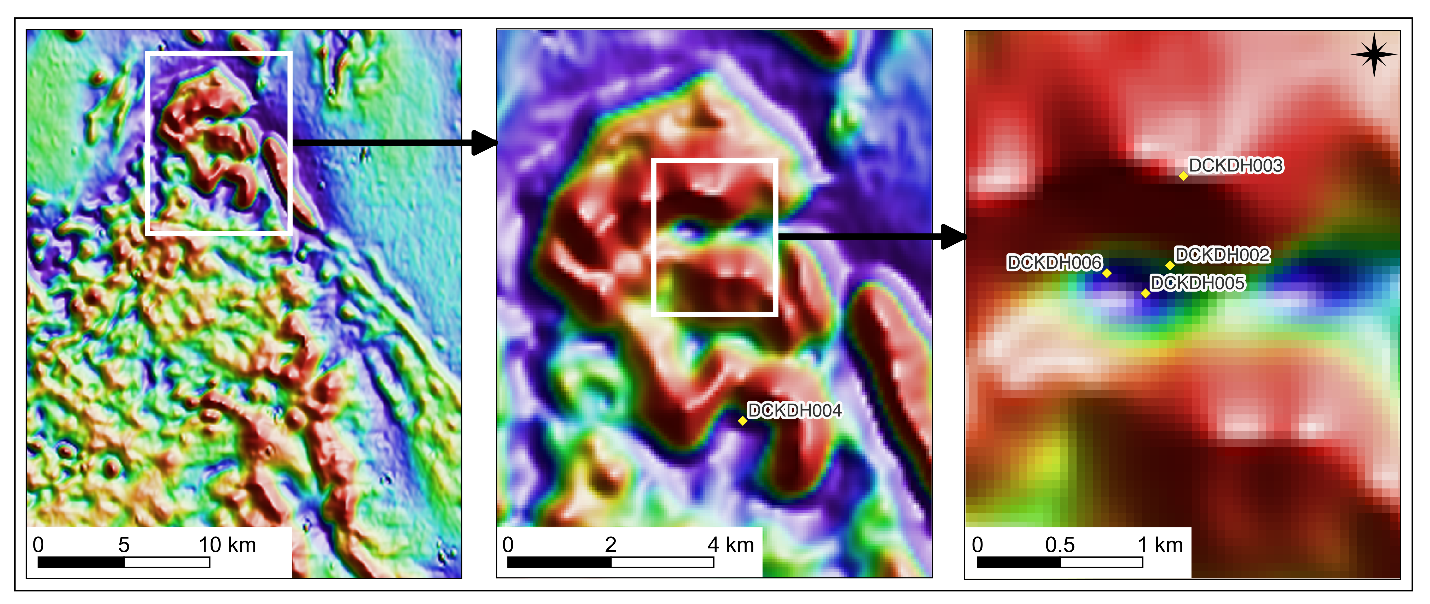Inflection Resources (CSE:AUCU) has provided an update to its ongoing exploration program in New South Wales, with the most recent drilling being focussed on the Duck Creek target. The company has intercepted a strong porphyry-style alteration and is now drill testing a series of copper-gold alkalic porphyry targets in the covered, northern extension of the Macquarie Arc.
The Duck Creek project includes a principal target area of 4.5 x 5.0 kilometres covering favourable magnetic and gravity features. At this time, Inflection is interpreting this to be a part of the Macquarie Arc volcanic sequence, with the broader target area comprising a large 10 x 15-kilometre gravity low embayment within the large regional magnetic high. The company is currently drill testing high-amplitude, complex, curvilinear magnetic patterns very similar to those typical of the intrusion-related signatures of the Macquarie Arc mineralized districts.
Drilling to-date has intersected strongly hydrothermally altered rocks, which are similar to those adjacent to mineralized alkalic copper-gold systems found at the Northparkes mine complex and Newcrest’s Cadia mine.

Alistair Waddell, Inflection’s President and CEO, commented in a press release: “We are very encouraged with the additional drill results at Duck Creek, which expand the alteration footprint and our understanding of the geological environment. Based on these results the Company interprets that recent drilling has intersected the upper parts of an alkalic porphyry system. We are excited to continue the drilling at Duck Creek and initiate the first deep diamond drill holes in the vicinity of holes DCKDH002, 005 and 006 to test for a potential mineralized centre of this large, complex hydrothermal system.”
Highlights from the update are as follows:
- The Company has completed three additional drill holes on the Duck Creek target where the Company previously reported favourable porphyry-style alteration from the first two holes;
- Drill holes DCKDH005 and DCKDH006 intercepted porphyry-style alteration similar to that found in the previously reported hole DCKDH002 extending the zone of favourable alteration over an approximate 400 by 250 metre area;
- Based on detailed modeling of geochemistry and mineralogy the Company will now target mineralisation at Duck Creek with a campaign of deeper diamond core drilling. The first priority target area is around the recent cluster of shallow drill holes DCKDH002, 005 and 006 that display strong alteration the Company interprets to be indicative of the upper parts of an alkalic copper-gold porphyry system. The principal target area of interest is associated with an 800 by 1,300 metre aeromagnetic low feature interpreted to represent magnetite destruction associated with hydrothermal alteration; and,
- An extended period of extremely wet weather, creating flood conditions, continues to impact most of eastern Australia and has limited access to the New South Wales project area including the Duck Creek drill platforms. Drilling is currently on-hold but will immediately recommence once the period of wet weather over the area comes to an end and the unpaved access roads dry out.
- The Company has completed an additional three drill holes, DCKDH004, 005 and 006, testing a variety of different targets in the vicinity of the previously reported holes DCKDH002 and 003 which returned strong porphyry-style hydrothermal alteration (see Inflection news release dated June 13, 2022).
- Drill hole DCKDH005 was a 405 metre deep -80º inclined hole drilled 225 metres to the southwest of hole DCKDH002 and intersected porphyritic andesitic volcanics with high-K calc-alkaline to shoshonitic affinities. These units exhibit feldspar-sericite-tourmaline-actinolite-pyrite alteration considered geologically analogous to that often seen in the upper parts of alkalic porphyry systems including Newcrest Mining’s Cadia East deposit. Centimetre scale blebs of bornite were intercepted at approximately 395 metres interpreted to be scavenged from earlier forming bornite veins and remobilised by later intrusive phases (Figure 1).
- Drill hole DCKDH006 is a -80º inclined hole drilled 380 metres west of hole DCKDH002 to a depth of 420 metres. The hole intersected polymictic volcaniclastics with patchy K-feldspar, quartz-epidote-chlorite-carbonate-pyrite-tourmaline alteration with disseminated actinolite. Assay results are anomalous for copper with values up to 771 ppm in holes DCKDH005 and 006 and are within the range of values expected in the upper parts of alkalic copper-gold porphyry systems located elsewhere in the Macquarie Arc.
- Drill hole DCKDH004 is a -80º inclined hole drilled into a separate target located approximately four kilometres to the southeast of hole DCKDH002. Drilling tested a large magnetic low interpreted to represent zones of magnetite depletion. The hole intersected andesitic volcaniclastics with moderate epidote-chlorite-minor hematite alteration. Weak alteration and geochemistry imply this specific target area has low potential and no further work is planned.




 Follow us on Twitter
Follow us on Twitter Become our facebook fan
Become our facebook fan










Comments are closed.